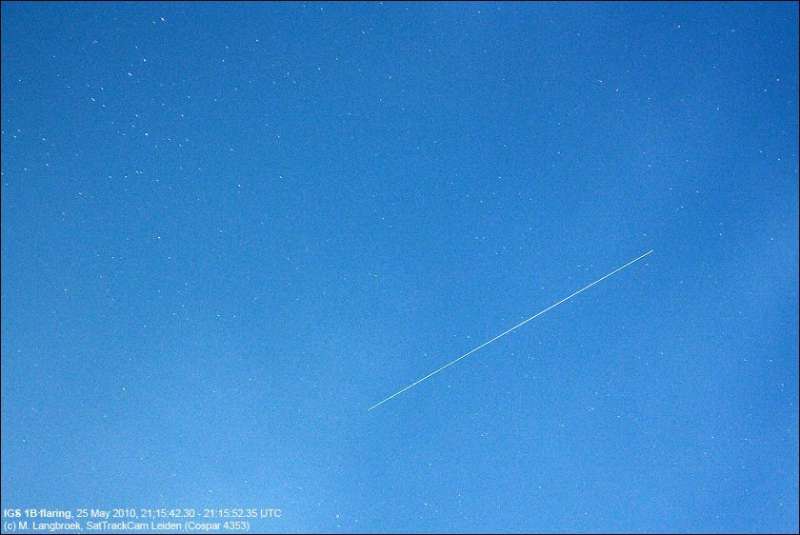This biannual occurrence neither either equinox is sometimes known as GEOSat flare and eclipse season.
Geosynchronous orbit is the critical point 22,236 miles (35,786 kilometers) from the Earth's surface at which a satellite orbits the Earth once every 24 hours and stays fixed over a given point and longitude on the Earth's surface. Place a geosynchronous satellite in a zero-degree-inclination orbit, and it's also geostationary. Futurist, science fiction writer and amateur astronomer Arthur C. Clarke first wrote about the coming importance of geostationary orbit in 1945 (over a decade before the beginning of the Space Age), and the zone is sometimes referred to as the Clarke Belt in his honor.
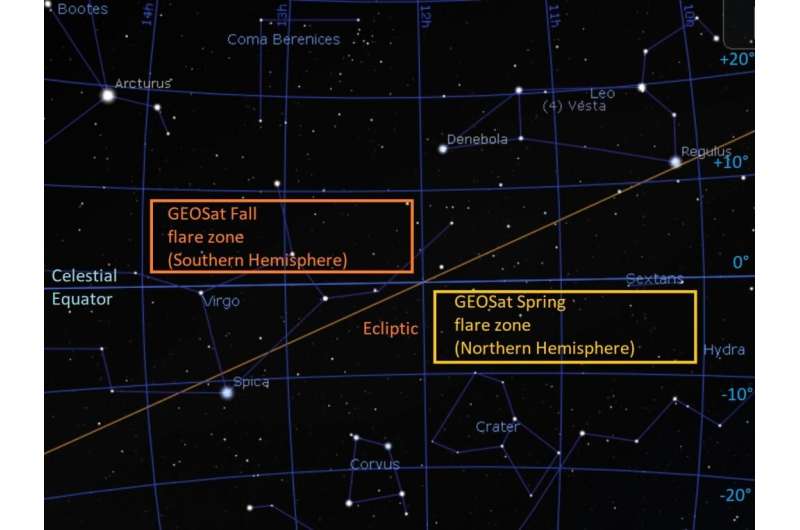
The first satellite successfully placed in GEO was Syncom 2 in 1963. As of 2020, 554 satellites have been placed in GEO. Many of these are weather or communications satellites, and a large portion are classified spy satellites. Some of these are later placed out in super-synchronous 'graveyard orbits' out beyond GEO at the end of their useful lives. This is done while contact is still possible, and their thrusters are still operative and contain fuel.
Turns out, we actually know less about the population of satellites in high Earth orbits (HEO) than we thought. A recent study out of the University of Warwick used a project known as DebrisWatch I to carry out a statistical census of distant artificial objects, suggesting we're only catching about 25% of what's out there in terms of objects 10 centimeters (4-inches) across or larger. Though the Clarke Belt is larger than low Earth orbit (LEO) in terms of sheer volume and area, it's also getting crowded, as well. For example a debris collision with Telkom-1 occurred in 2017, disabling the satellite. This sort of event may become more common as GEO (like LEO) gets cluttered with debris.
Certain regions along the celestial equator are notorious for GEOSats. Working at the Flandrau Observatory on the University of Arizona campus years ago, I would see GEOSats slowly nodding from north-to-south and then back again during certain times of the year, while showing off the Orion Nebula (M42) to the public.
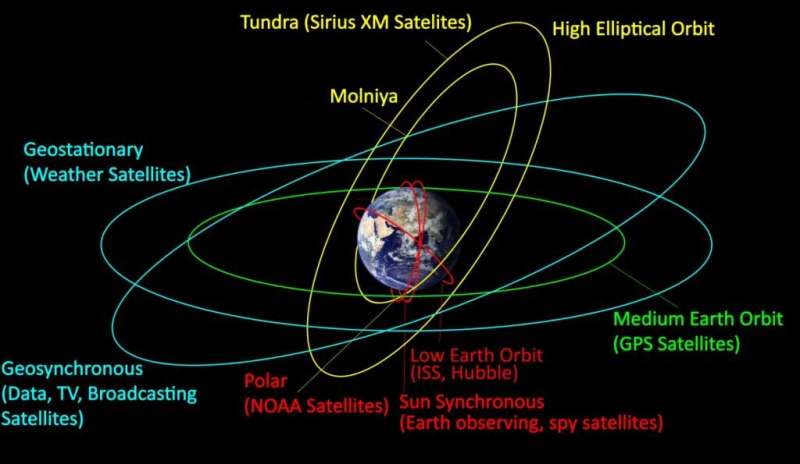
Flares, Flashers and Tumblers
Of course, not everything that flares into visibility is in GEO. In LEO, the first generation of Iridium satellites faithfully put on a show through the first two decades of the 21st century, though the second generation of Iridium satellites aren't as spectacular. Long chains of Starlink satellites will flare on occasion—despite visors meant to mitigate visibility—as the individual single panel attached to each satellite glints in the sunlight. Anything tumbling in orbit will flash and flare as it turns end over end. Good examples are the failed Hitomi X-ray observatory, the U.S."s enigmatic vanishing Lacrosse-5 spy satellite and, (until it reentered recently), Indonesia's failed Telkom-3 satellite.
The prime difference is that GEO satellites appear to stay stationary with respect to the observer, but move with respect to the background sky. You can see this on wide-field exposures of the sky during time-lapses: shooting star trails, GEO satellites will appear stationary—but track the sky during an exposure, and it's the GEOSats themselves that will turn up as trails across the image. On average, GEOSats shine at about magnitude +10, but they can flare up into the visible magnitude range before hitting the Earth's shadow, which is about 13.5 degrees across at GEO. Satellites at GEO take about 54 minutes to traverse the shadow, before hitting sunlight again.
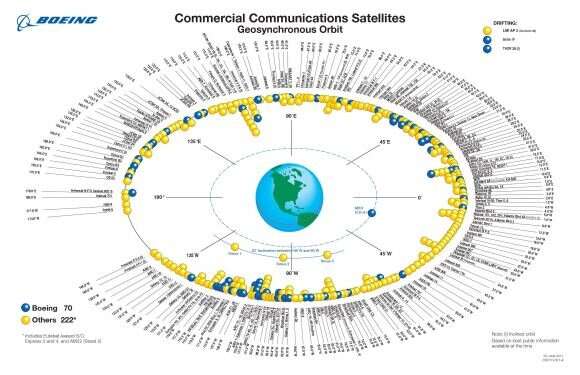
Unclassified orbital slots in geosynchronous orbit (open to enlarge). Credit: Boeing 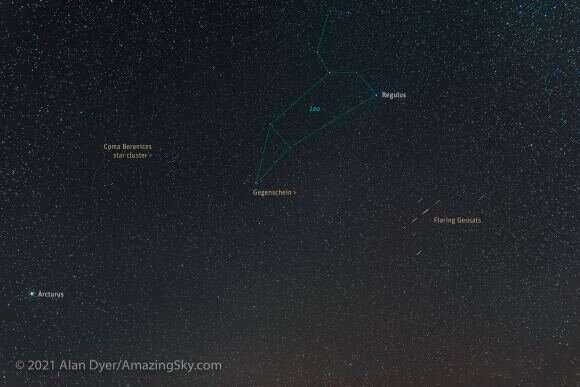
Flaring GEOSats in the springtime sky. Credit: Alan Dyer/AmazingSky.com
A good time to catch this phenomenon is in the Spring and the Fall near either equinoctial point at local midnight, as the Earth's shadow transits the meridian.
What Sat is That?
Knowing just what satellite your seeing is also helpful. Unfortunately, CalSKY—once a great resource to peg what GEOSats in view for your location—is no more. Comparing the current list of GEOSats against longitude slots can help you in your quest: the free desktop planetarium software program Stellarium also lists unclassified GEOSats, and can help you cinch an identification.
With no atmospheric drag, GEO satellites are in very stable orbits over time, and may in fact serve as the longest lasting artifacts our civilization has ever produced. Knowing this, time capsules have been placed aboard a few GEOSats: in 2012, Creative Time placed the Last Pictures archival disc aboard EchoStar XVI. In 1976, Carl Sagan designed a plate that is now affixed to the LAGEOS-1 satellite, showing the geological positions of the continents of the Earth over time.
Explore further



